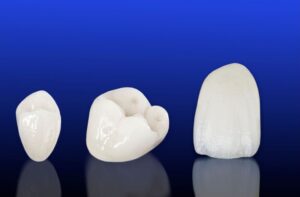Good Flossing Technique is Key in Oral Health
Every person who has ever visited the dentist has been asked, “have you been flossing” by either their dental hygienist or dentist, and according to the American Dental Association, 20% of adults never floss. Is flossing really that important?
A systematic review in the Journal of Dental Research found that professional flossing performed on children ages 4-13 on school days for 1.7 years was associated with a 40% decrease in cavities. However, this same study found no reduction in cavities when the flossing was done by the children themselves. Surprisingly, a number of other studies of flossing failed to find reductions in plaque and gingivitis
What does all this mean? Should we throw out our dental floss, as the media is suggesting?
Not quite. It is the technique of flossing that is key. A good flossing technique—such as that done by a dental hygienist in the office, has many proven benefits. These benefits include decreased plaque (that stuff that sticks to your teeth, even after brushing), a lower risk of gingivitis (which causes bleeding gums), and better breath.
In other words, good flossing results in better oral health.
So what, exactly, is the right way to floss? After all, you don’t want to spend time doing something everyday that isn’t going to help you. Well, here is a hint: quickly swiping some floss between each of your teeth in order to pull out whatever food particles might be stuck isn’t the way to do it. This is no doubt how many children (and even adults) floss, and it isn’t very effective.
Flossing Technique tips:
First of all, if you can, use dental floss from a dispenser—not those little tools with handles that hold a short length of floss. You need to be able to get in there and manipulate the floss around each tooth. Wrap the floss tightly around a finger of each hand, pull a short length of floss taut, then insert it below the gum line along the side of one tooth. Wrap the floss around the side of the tooth then scrape up; next insert the floss below the gum line of the adjacent tooth, wrap around the tooth, then scrape up again. Remove any debris that is collected on the floss, then continue onto the next pair of teeth.
Use this flossing technique nightly before bed to remove food particles and plaque that have accumulated during the day between the teeth—including below the gum line. Before bed is a great time to do it not just because it is after all the meals and snacks of the day are completed but for another reason, too. Bacteria proliferate in the mouth during sleep as a result of decreased salivation, less swallowing, and lack of drinking fluids. Flossing before bed, like brushing, will help remove substances that the bacteria feed on.






